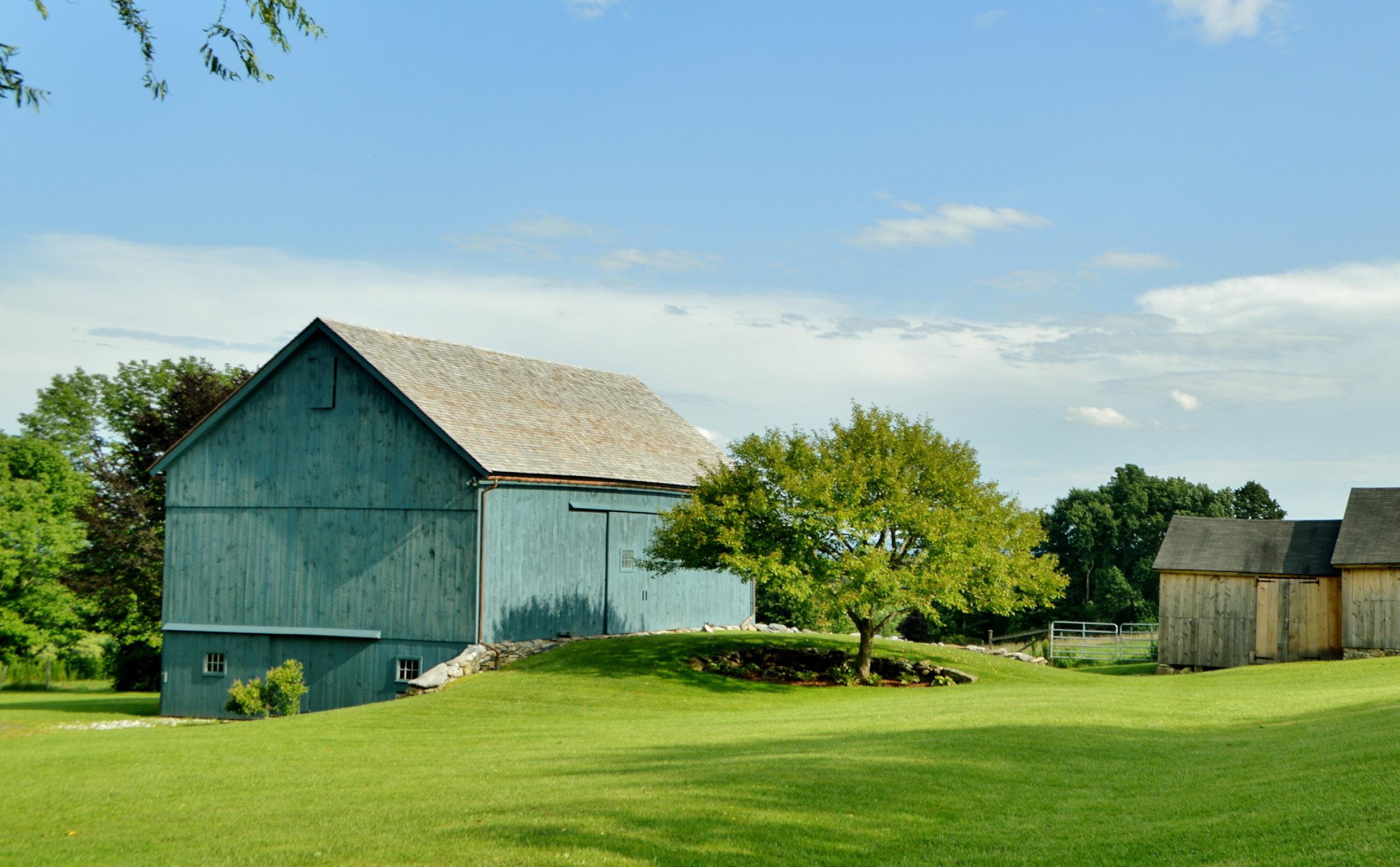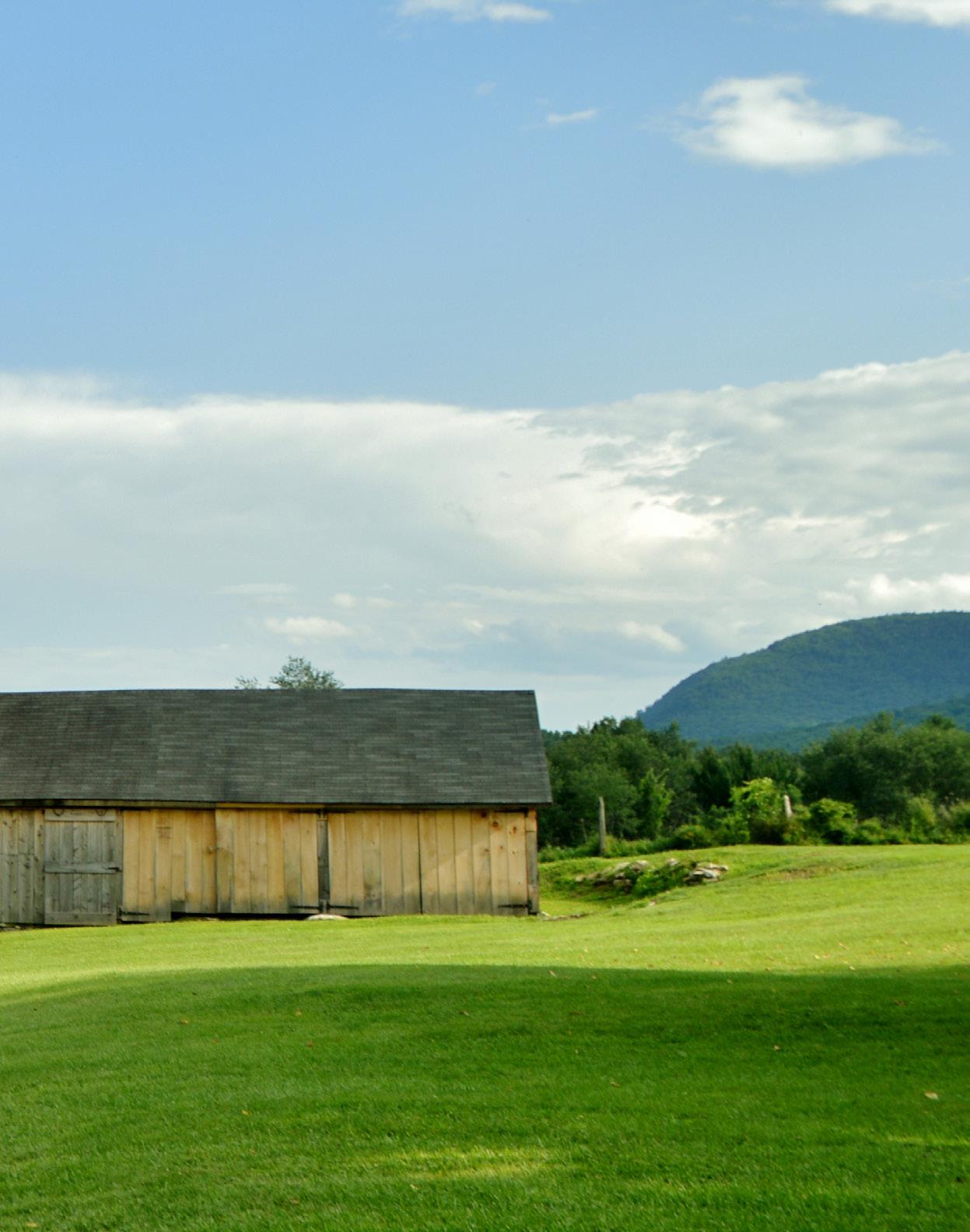
6 minute read
A Path to Partnership
The Westover-Bacon-Potts Farm, just north of the Appalachian Trail in western Massachusetts, reflects more than 200 years of agricultural practices in the Berkshires. Cooperation among local and regional partners ensures that this special place will continue to thrive for decades to come.
by CARISSA DEMORE Team Leader for Preservation Services
From a sharp bend in the Appalachian Trail as it traverses Jug End a mile north of Mount Bushnell, a hiker can look out across a scenic expanse of rocky outcrops, forested hillsides, and agricultural fields interspersed with the small towns that characterize the Berkshire
Valley in Massachusetts. Following the trail a couple of miles to the east, down into the valley below, the historic Westover-Bacon-
Potts Farm stands in Egremont adjacent to the trail as a reminder of an agrarian past and a tangible connection to the preservation and conservation priorities of future generations.
Stretching more than 2,000 miles from Springer Mountain in Georgia to Mount Katahdin in Maine, the Appalachian Trail is a 100-year-old hiking path that more than 1,000 hikers traverse annually, as well as millions of local and regional explorers who feel called to take a walk in nature. But rather than insulating hikers in untouched wilderness, the Appalachian Trail has always intentionally connected its visitors to a variety of cultural experiences—at times inspirational and at times confrontational.
The very goal of its creation—as envisioned by New England planner and forester Benton MacKaye in a 1921 article published in the Journal of the American Institute of Architects titled “An Appalachian Trail: A Project in Regional Planning”—was to challenge the economic and
The nineteenth-century bank barn (left) takes advantage of the undulating topography of the farm. It is called a bank barn because its hillside construction provides ground-level access to the building’s two stories for carts, wagons, and animals.
industrial realities of the United States and reestablish a cooperative relationship between urban and rural spheres, calling for alignment of innumerable disciplines from architecture to ecology, food production to religious philosophy.
Befitting this grand planning vision, Westover-BaconPotts Farm is made up of 150 acres of purposefully conserved landscape and a historic core of farm buildings that shows the evolution of a farm in continuous use from the mid-eighteenth through the mid-twentieth century. The oldest building in the complex, and perhaps the oldest dwelling in Egremont, is the c. 1744 saltbox farmhouse arranged in typical three-room plan around a large central chimney. The house connects to a nineteenth-century horse barn, now repurposed as offices for today’s owners, via a long, low ell. Across the yard, an eighteenth-century shed is hidden behind a late nineteenth-century barn, set into the hillslope.
Colonial settlement was very new to Egremont when Westover-Bacon-Potts Farm was constructed. In the early eighteenth century, much of the surrounding land was included in a reservation of the Mahican tribe. The farmhouse was constructed by Jonah Westover, who settled on property owned by Joseph Van Guilder, the descendant of a Mahican man named Toanuck/ Tawanut who was also called John Van Guilder. Westover acquired the property in 1751 and continued to farm crops and maintain livestock. The Bacon family acquired the property in 1859 and continued farming operations. Through 1966, the farm remained in Bacon ownership, with descendants eventually marrying into the Potts family.
Starting in 1967, as the property transitioned from working farm to summer home, new owners took an interest in its historic significance. Consulting with Colonial Williamsburg, the owners restored decorative painting in the house’s entry stairhall, while a modern kitchen was sensitively inserted and heating and plumbing systems were introduced. The barn was repurposed to house antiques.
The next owner, Mary Margaret Kellogg, who purchased the property with her husband, Charles, during the Bicentennial, secured an even more enduring connection with the property’s history. Starting in the 1980s, Kellogg carefully divided the land into seven parcels in an elaborate strategy to ensure appropriate protections for different components of the farm. Fifty acres were restricted for agricultural preservation under the direction of the American Farmland Trust. Thirty-five acres were protected via conservation and preservation


restrictions managed by the Appalachian Trail Conservancy. An additional fifty acres were associated directly with protections for the Appalachian National Scenic Trail.
Kellogg’s generosity in ensuring the perpetual protection of such a large and significant property was continued in 2004 when she donated Westover-BaconPotts Farm to the Appalachian Trail Conservancy. In 2014, the conservancy contacted Historic New England about the preservation restrictions on the historic farm core to ensure that the perpetual protections Kellogg had intended would be properly overseen by an organization with historic preservation expertise.
The process of transferring oversight of the preservation restrictions to Historic New England was complex. In order to be successful, Historic New England and the Appalachian Trail Conservancy needed to make sure that goals for adapting the property to an increasingly public use were aligned with the priorities detailed in the preservation restrictions. Discussions between the organizations ranged from the appropriate location of a parking area to the potential use of the large barn as a functions venue. Throughout the process, the Egremont Historical Commission was an integral partner whose members could speak on behalf of the community and add much needed local perspective about the significance of the farm and its potential future use.
Over the course of a seven-year exploration of adaptive use opportunities and preservation concerns, the Appalachian Trail Conservancy determined that it was in its best interest to transfer ownership of the property and a fourth partner was introduced: Greenagers Inc. A thriving nonprofit organization based in the Berkshires, Greenagers offers paid jobs and environmental education programs for teens and young adults, building skills in trail maintenance, stone wall reconstruction, animal husbandry, and organic farming. Their interest in the cultural history and environmental value of Westover-Bacon-Potts Farm made them ideally suited owners for the dynamic site.
The addition of Greenagers was key to the dialogue about the future of Westover-Bacon-Potts Farm, ensuring a capable organizational partner for both Historic New England and the Appalachian Trail Conservancy, which continues to hold conservation restrictions on parcels surrounding the historic farm buildings. Two years after acquiring the farm, Greenagers is implementing innovative, regenerative farm practices that improve the health of the soil and the health of the surrounding communities when young people replicate these small-scale farming techniques at their own properties. Looking ahead, the organization is developing plans to increase the use of the barn for public programs and considering options to make use of the farmhouse.
The new partnership between Greenagers, the Appalachian Trail Conservancy, and Historic New England’s Preservation Easement Program is an exciting opportunity to consider ways to ensure that the nearly 300-year-old farm remains relevant and responsive to current and future needs of the Egremont community and, especially, the young people who have the opportunity to work there. That, in turn, ensures that Westover-Bacon-Potts Farm’s long heritage in the region and along the Appalachian Trail is preserved.
The new partnership is an exciting opportunity to consider ways to ensure that the farm remains relevant and responsive to current and future needs of the Egremont community and, especially, the young people who have the opportunity to work there.










